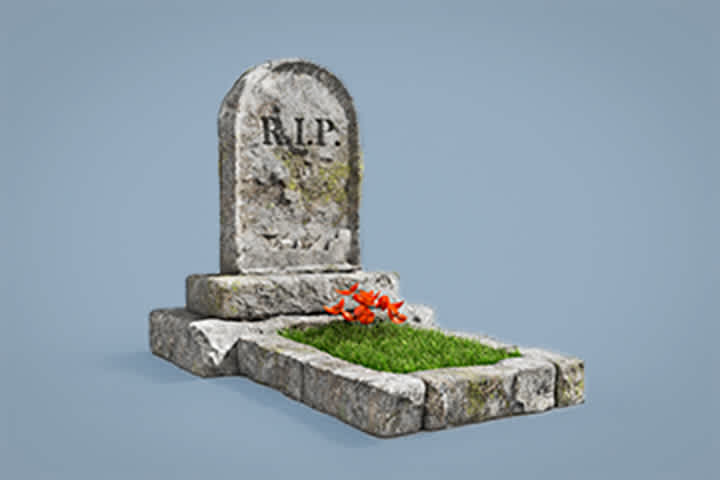Stamp duty and inheritance taxes are set to fall sharply in Wallonia
Keytrade Bank
keytradebank.be
September 03, 2024
3 minutes to read
The new Walloon government is planning a major clean up when it comes to stamp duty and inheritance tax. Although the plans still need to be converted into legal texts, they appear at first glance to be favourable to those who want to buy their first home and those who receive an inheritance. Let's take a look.
1. Lower inheritance tax rates
If you inherit something in our country, you usually pay tax on it. The amount depends on a number of factors: the (familial) relationship you have with the deceased, how much you inherit, and the region in which the deceased lived for the last five years of their life.
The rates rise with the value of the inheritance. On the first part, you pay the lowest percentage, on the next part a little more, and so on. In each higher bracket, you therefore pay a larger share to the tax authorities. In the Walloon Region, rates start at 3% and can rise to as high as 80%. The closer the family relationship, the lower the rates. In some cases, you can also benefit from some exemptions and reductions.
The new Walloon government now wants not only to drastically reduce these rates but also to simplify them. If what is set out in the coalition agreement is actually approved, the rates will be as follows:
• Immediate relative (spouse, legal cohabitant, child, grandchild, parent, grandparent, etc.): inheritance tax of at least 5%, which may increase progressively up to 15%. The lowest rates of 3% (on the first tranche of up to EUR 12,500) and 4% (between EUR 12,500 and 25,000) remain in place. Currently, the rates range from 3% to 30%. The top rate would therefore be halved.
• Between brothers, sisters, cousins, nephews, nieces, uncles and aunts: the new minimum rate would start at 7% and rise to 35%. This is also a significant reduction and simplification: currently, the rates between siblings are between 20% and 65%, and there is a separate arrangement for cousins, nephews, nieces, uncles and aunts (25% to 70%).
• In other cases: an inheritance tax of at least 15% that may rise incrementally up to 40%. This is also cutting it by half. Currently, the rates range from 30% to 80%.
Not until 2028?
It is important to remember that this is all in the planning stage. They could still be dropped if, for example, it turns out that there is not enough budgetary headroom. Even once the plans have been approved, it may take a long time before they actually take effect. This is due to the fact that the Walloon Region first needs to take over the collection of inheritance tax from the federal government. This is planned for 2025. After that, there are many steps to be followed. At the moment, it looks like the new rates will come into effect in 2028.
Difference with gift tax reduced
One of the consequences of the new inheritance tax rates is that they are closer to the rates for gifts. These rates are currently between 3.3% and 5.5% for movable property (money, investments, jewellery) and between 3% and 40% for real estate. This means it would become less attractive to issue a gift (which would also result in fewer gift taxes flowing into the treasury).
2. Lower stamp duty when buying your own home
The new Walloon government also wants to lower the threshold for those who wish to buy their own home. Currently, stamp duty is 12.5%, regardless of whether this is your home or an additional property. The aim is to reduce the rate paid on the home a person lives in to 3% from the beginning of 2025. When buying a second residence or investment property, you will still pay stamp duty of 12.5%. If buying your own home for, say, EUR 300,000, this would imply registration fees of EUR 9,000 instead of EUR 37,500. However, buyers must move into the home within three years (five years if it is a plot of land on which a home must be built). Once resident at the address, buyers must continue to live there for at least five years; otherwise, they must pay the suspended charge.
Other benefits will disappear
Some other existing favourable measures would be scrapped. Currently, in the Walloon Region, you do not pay stamp duty on a portion of the purchase price . For example, if your home cost less than EUR 350,000, you would not pay registration fees on the first EUR 40,000. This represents a saving of EUR 5,000 (which is also the maximum discount you can receive under the current system). The reduced stamp duty (6%) for the purchase of a low-cost home would also disappear. Given the lower stamp duty of 3%, though, a clear benefit still exists.
The chèque habitat mortgage tax relief will also disappear. This is a tax benefit for those who borrow to purchase a family home in the Walloon Region. However, you need to meet certain conditions in order to qualify for this tax relief. For example, you must live in the home, you may not own any additional property, and there is an income ceiling. If you already have a loan, you will still receive the chèque habitat. However, this would no longer be available for new property purchases.
Want to put your property plans on ice for a while?
For those who are planning to buy their own home, it may be worthwhile to wait a little until September 2024. You can delay for a maximum of four months between signing the sales agreement and executing the deed. If the reduced stamp duty does take effect from 1 January 2025, sales agreements signed in September 2024 could still benefit from the lower tax rate if the deed is executed in January 2025. You need a crystal ball to see whether the lower registration fees will cause house prices to rise. On the one hand, sellers will not know whether a buyer will benefit from the lower stamp duty amount, so they have no reason to increase the price. On the other hand, the reduction in stamp duty may make more buyers willing to make an offer – which would push prices up.


